Specializing in sheet metal forming, Gebhardt has analyzed and automated its milling processes in cooperation with MMC Hitachi Tool. The result is improved processes, longer tool lives, faster machining and reduced manufacturing costs.

Top and bottom of the finished punch made of material 1.2738, which corresponds to that of the test workpiece. The windscreen trims for the Audi "A8" are created with the drawing tool. © Gebhardt / MMC Hitachi
Gebhardt Werkzeug- und Maschinenbau offers full service for complex parts in the automotive sector. You cover the entire process chain, from the basic planning, possible component optimization over design and manufacturing to tryout, reports CEO Markus Gebhardt. "We have fewer employees than machines. The latter must run day and night without anyone standing by. We rely on automation, in such a way that we remain flexible. "The milling area is one of the key adjusting screws. So the eye falls immediately on the five-axis machining center "C42 U" of Hermle together with diligently acting articulated robot. He supplies the machine with workpiece pallets around the clock and places the finished parts in the designated storage space. Gebhardt integrated the plant into the process - with its own know-how. Another aspect is the constant processing quality of the 24/7 production.

The test object of the ball mill was a 100 mm high, 80 mm wide and long block of pre-hardened 1.2379 with 60 HRC. © Gebhardt / MMC Hitachi Tool
Over the years, a high level was worked out during milling. Nevertheless it came during the roughing again and again to plate breaks. This would have led to massive problems in an automated production. That is why Gebhardt was looking for a solution. Furthermore, shorter processing times were desired, which should not be bought with lower service lives. The toolmaker contacted MMC Hitachi Tool. Gebhardt has been using products from the Japanese manufacturer for years.
Florian Huber, an experienced expert from MMC Hitachi Tool, visited Gebhardt. As a test, a 1500 mm long, 400 mm wide and 250 mm high punch made of 40CrMnNiMo8 (1.2738) die steel should be roughed out of the solid. The part represents a typical processing situation. Florian Huber went for the holistic optimization concept "Production 50" (P 50), which MMC Hitachi Tool has developed especially for machining process chains in tool and mold making. After the analysis of CAM strategy, machine and tool use, there were further experiments. They quickly achieved their goal: as a reference, a 40 mm diameter, six-flute Torus indexable insert milling cutter was chosen by MMC Hitachi Tool. The diameter is the one used by Gebhardt for roughing. If successful, it can scale to smaller diameters. It was scrubbed with Z-constant and programmed with "Work NC" as a CAM system.

"We have fewer employees than machines. They have to run around the clock without anyone standing by. "Markus Gebhardt © Gebhardt / MMC Hitachi Tool
The result exceeded expectations, the values determined are today reference at Gebhard. The tool life has increased with the MMC Hitachi tool tools for components of this type between 30% and 40%. Plate breaks do not occur anymore. "Today, we use the plate for roughing on all types of structural steel and high-alloyed steels," says Rainer Brandt, Head of CNC Milling at Gebhardt. "In addition, we were able to gain speed. In the trial, we reduced the processing time to 240 minutes, making it 30 percent faster. "

Swivel and turntable of the automated Hermle "C42 U", on which both roughed and - in part to finished size - is leveled. © Gebhardt / MMC Hitachi Tool
Another project was to confirm that hard machining can also be further optimized. Two double-edged, differently coated Hitachi ball end mills (EPBTS-TH, HGOB-PN) with 10 mm diameter were compared with seven ball end mills of similar type from other manufacturers. The focus of the tests on the Hermle C 42 was process reliability, surface area and tool life. The test object was a 100 mm high block with 80 mm length and width on 60 HRC pre-hardened X155CrVmo12-1 (1.2379), which is the standard material for hard machining at Gebhardt. The experimental set-up consisted of a swivel-in ball mill that was milled through at a 30 degree angle for five hours on a single point. During the tests, all processing parameters remained the same, starting from the cutting parameters and the experience with MMC Hitachi Tool. The surface, deviation from the programmed dimension and the removal of the milling tool in the process were measured. The goal was a one-to-one comparison between a more expensive and a cheaper tool.

Right Rainer Brandt, Head of CNC Milling at Gebhard, Florian Huber, Application Technician MMC Hitachi Tool in front of the Hermle machining center. It is controlled with the "ITNC 640" -CNC from Heidenhain. © Gebhardt / MMC Hitachi Tool
In the EPTS, a wear of 0.02 mm was measurable, the deviation from the zero dimension was also 0.02 mm. This was better than the competition tools, where wear and dimensional deviation were up to 0.07 mm, with a mean roughness Ra of sometimes up to 0.7 μm. The EPBTS delivered the best result in terms of tool life and surface quality. The optimal result with the EPBTS was finally a Ra of 0.21 μm - almost polishing quality. "I was surprised how much the processing results differed from the tools of the different manufacturers. Because we had four times worse surfaces under exactly the same conditions, "emphasizes Rainer Brandt. "In addition, the ball end mills were tested in 20 degree and vertical alignment to test the face geometry. The latter, because the ball milling cutters are very often used to mill flat areas - here, too, the EPBTS was able to clearly convince in terms of surface quality and dimensional accuracy. "

Stamped drawing part produced with a Gebhardt tool. © Gebhardt / MMC Hitachi Tool
Another plus point was the reduced production costs. As part of the P-50 concept, Florian Huber had carried out a process-oriented profitability calculation for roughing the stamping die, which documents the resulting production costs. "For our test workpiece, the plates needed for roughing the stamp cost around 73 euros. That's 50 euros more than the competition, "says Markus Gebhardt. "However, we will save the additional price due to the longer service life and the one-third faster processing." Including machine costs, the manufacturing costs for roughing the stamping die dropped by 24%.

1700 m² and air conditioned to ± 0.4 ° C: in the foreground the Hermle C42 U with robot cell "RS2". © Gebhardt / MMC Hitachi Tool
Gebhardt Werkzeug- und Maschinenbau GmbH
Lion Street 4-8
88255 Baienfurt
Contact person is Markus Gebhardt
Tel .: +49 751 56163-0
info@gebhardt-gmbh.de
www.gebhardt-gmbh.de
MMC Hitachi Tool Engineering Europe GmbH
Itterpark 12
40724 Hilden
Contact person is Florian Huber
Tel .: +49 21 03 2482-0
info@mmc-hitachitool-eu.com
www.mmc-hitachitool-eu.com
From: https://www.umformtechnik.net















































